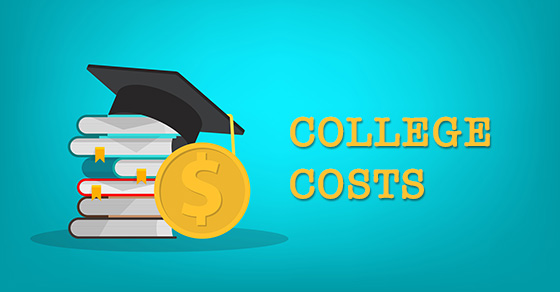
Tax-wise ways to save for college
If you’re a parent or grandparent with college-bound children, you may want to save to fund future education costs. Here are several approaches to take maximum advantage of the tax-favored ways to save that may be available to you.
Savings bonds
Series EE U.S. savings bonds offer two tax-saving opportunities when used to finance college expenses:
- You don’t have to report the interest on the bonds for federal tax purposes until the bonds are cashed in, and
- Interest on “qualified” Series EE (and Series I) bonds may be exempt from federal tax if the bond proceeds are used for qualified college expenses.
To qualify for the college tax exemption, you must purchase the bonds in your own name (not the child’s) or jointly with your spouse. The proceeds must be used for tuition, fees, etc. — not room and board. If only some proceeds are used for qualified expenses, only that part of the interest is exempt.
If your modified adjusted gross income (MAGI) exceeds certain amounts, the exemption is phased out. For bonds cashed in 2023, the exemption begins to phase out when joint MAGI hits $137,800 for married joint filers ($91,850 for other returns) and is completely phased out if MAGI is $167,800 or more for joint filers ($106,850 or more for others).
Qualified tuition programs or 529 plans
Typically known as a “529 plans,” these programs allow you to buy tuition credits or make contributions to an account set up to meet a child’s future higher education expenses. 529 plans are established by state governments or private institutions.
Contributions aren’t deductible and are treated as taxable gifts to the child. But they’re eligible for the annual gift tax exclusion ($17,000 in 2023). A donor who contributes more than the annual exclusion limit for the year can elect to treat the gift as if it were spread out over a five-year period.
Earnings on the contributions accumulate tax-free until the college costs are paid from the funds. Distributions from 529 plans are tax-free to the extent the funds are used to pay “qualified higher education expenses,” which can include up to $10,000 in tuition for an elementary or secondary school. Distributions of earnings that aren’t used for “qualified higher education expenses” are generally subject to income tax plus a 10% penalty.
Coverdell education savings accounts (ESAs)
You can establish a Coverdell ESA and make contributions of up to $2,000 for each child under age 18. This age limitation doesn’t apply to beneficiaries with special needs.
The right to make contributions begins to phase out once AGI is over $190,000 on a joint return ($95,000 for single taxpayers). If the income limit is an issue, the child can make a contribution to his or her own account.
Although contributions aren’t deductible, income in the account isn’t taxed, and distributions are tax-free if spent on qualified education expenses. If the child doesn’t attend college, the money must be withdrawn when the child turns 30 and any earnings will be subject to tax plus a penalty. However, unused funds can be transferred tax-free to a Coverdell ESA of another member of the family who hasn’t reached age 30. The age 30 requirement doesn’t apply to individuals with special needs.
We can help
These are just some of the tax-favored ways to save a college fund for your children. In a future article, we’ll discuss possible tax breaks once your child is already in college. Contact us if you wish to discuss these issues.
